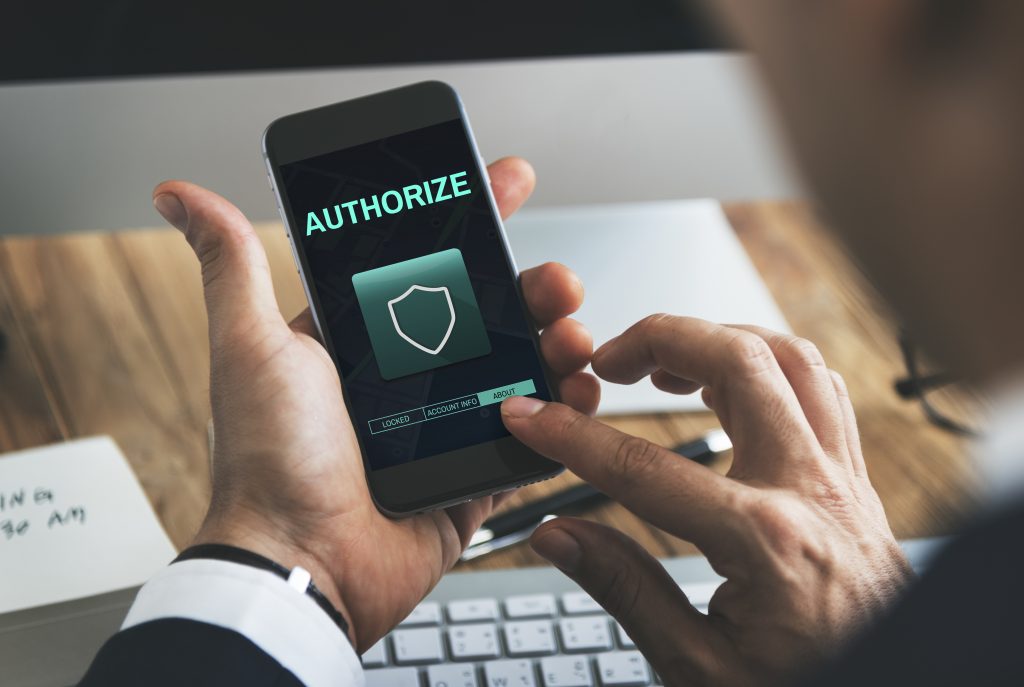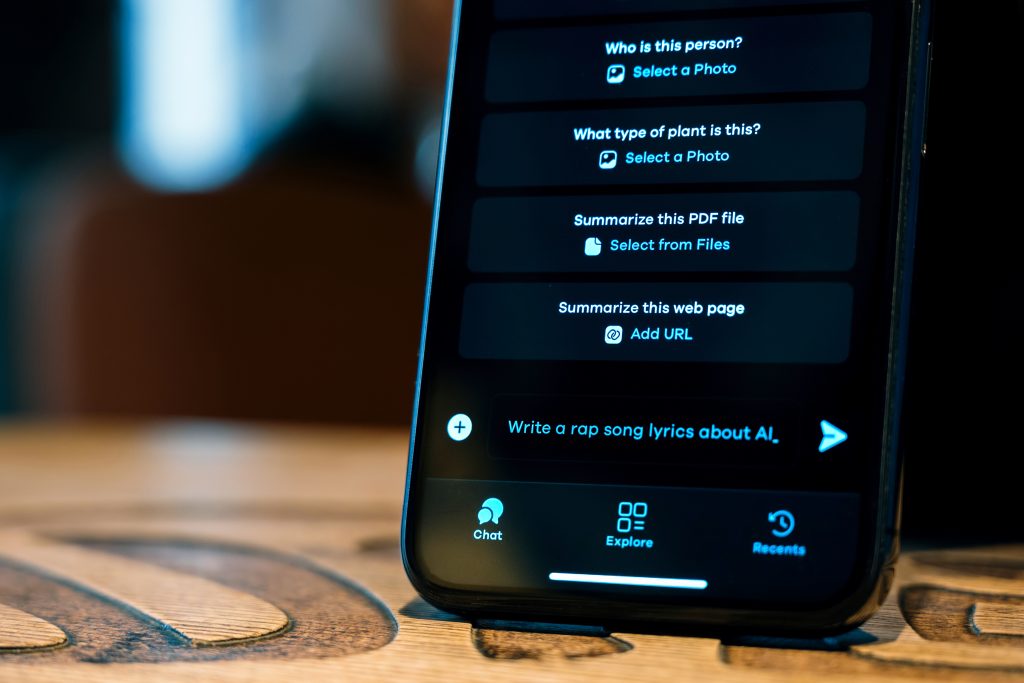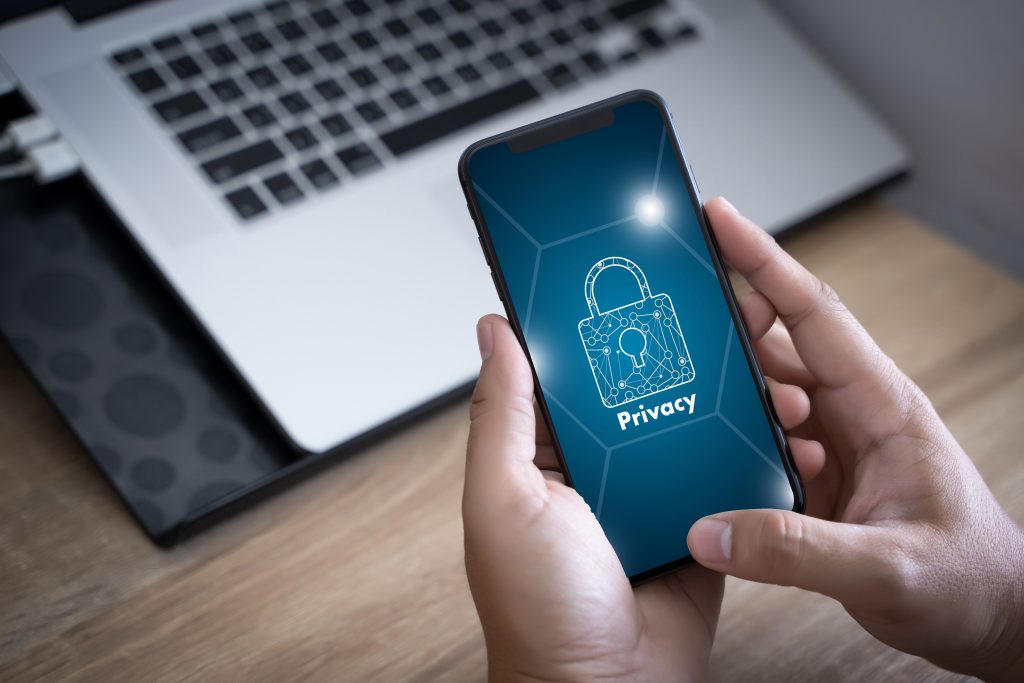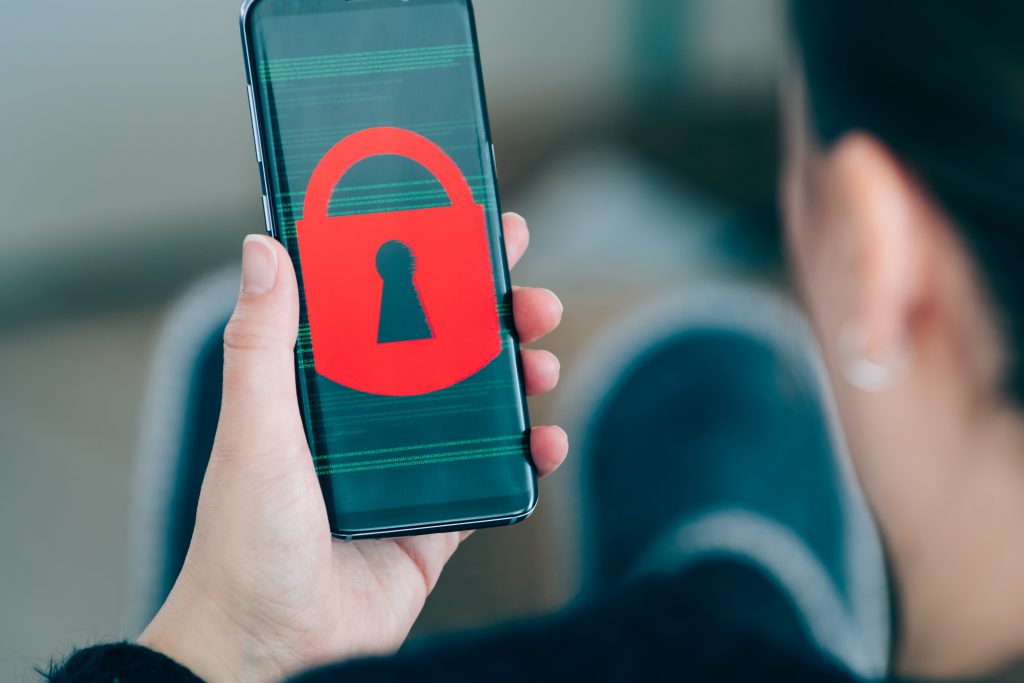
Introduction about Security Concerns in Mobile App Development
In the constantly evolving realm of mobile applications, application development has been forecasted to show significant growth, estimated to reach $386.7 billion by 2024 as per a report. An unavoidable aspect of this surge is a strong emphasis on securing user data, following secure development protocols.
Shaping the Security Structure for Developers
Moving ahead, code encryption, extensive security checks, and back-end safeguards will form the bedrock of secure mobile app development practices, making applications less vulnerable to cyber threats.
Securing Interests: Consumers and Businesses
As we look ahead to 2024, maintaining strong mobile app security will become non-negotiable. Serious security breaches impacting both consumers and businesses can occur without proper protocols in place. In the era of BYOD, additional protective measures need to be implemented for these companies.
Optimization of Mobile Application Security Practices
Keeping mobile application security measures up-to-date will be paramount in 2024. This will entail vigilant monitoring and adaptations to efficiently mitigate future threats.
Centrality of Code Encryption
Strengthening app integrity through code encryption will continue to be a recommended security practice in 2024. This fundamental practice keeps external entities from interfering with applications, rendering them more secure.
Security Concern #1: Improper Credential Usage

A significant security concern in mobile application development is improper management of user credentials – a prime target for cybercriminals looking to exploit any vulnerabilities for unauthorized access to personal data. The importance of robust authentication and secure access control cannot be underestimated. Dividing the content into crucial takeaways,
- Credential handling: User credentials, including login data, should be securely stored, transmitted, and accessed to protect the application’s overall security.
- Authentication: It’s essential to apply robust systems, such as multi-factor authentication,ometric bi verification, or token-based systems, to verify users’ identities successfully.
- Access Control: Good access control limits the data scope a nefarious actor can access, even if user credentials are compromised.
- User data protection: Treat passwords and user credentials carefully, as they are amongst the most sensitive data an application handles. Neglecting this aspect can lead to severe security breaches.
All summed up, improper credential usage opens a pathway for potential security threats. Mobile application developers should prioritize credential security, integrating strong authentication measures and prioritizing access control to prevent data breaches.
Security Concern #2: Inadequate Supply Chain Security
Envision this – in mobile app development, third-party libraries serve as external puzzle pieces of your overall system. However, these can sometimes bring security risks, leading to what we know as inadequate supply chain security.

- Not all third-party libraries are secure: they may host hidden vulnerabilities, potentially causing catastrophic data breaches.
- These vulnerabilities can interact with your app’s other components, opening a gateway for cyber attacks.
- Detection of these vulnerabilities can be complex, requiring constant vigilance in line with the ever-changing landscape of cyber threats.
- Failure to efficiently manage these third-party libraries can expose your mobile app to grave risks.
- This can result in unauthorised access and misuse of sensitive data, harming both your app’s users and your company‘s reputation.
Security Concern #3: Insecure Authentication/Authorization

Let’s delve into the topic of insecure authentication and authorization, a prevalent mobile application development concern. Simply put, inadequate security provisions are invitations to potential hackers.
- Multi-Factor Authentication Importance: Implementing robust Multi-Factor Authentication (MFA), requiring multiple identification forms, dramatically enhances mobile app security. However, ignoring MFA exposes users’ sensitive data to security risks.
- Authorization Protocols: Once users are authenticated, authorization protocols govern their in-app actions. Poorly designed or executed protocols may accommodate unauthorized users, resulting in data breaches.
- Security Policies Role: Robust security policies, constituting different guidelines and rules users must follow, are necessary to maintain app security. The absence of such strong policies invites security threats.
In summary, insecure authentication and authorization can severely undermine your app’s security integral to its success. Hence, it is imperative to focus on implementing, Multi-Factor Authentication (MFA), sturdy authorization protocols, and robust security policies.
Security Concern #4: Insufficient Input/Output Validation

Securing your mobile application is not just a goal, but a never-ending journey. Here are some crucial points to note on this journey:
- Input Validation: A gatekeeper that makes sure any data entering into your system is safe. A crucial step to avoid security threats.
- Output Encoding: Ensures the safe transmission of data from your application to the user’s device. Coupling it with input validation builds a robust defense against data breaches.
- Data Sanitization: Regularly cleaning your stored data ensures it’s free of any threats. The proactive approach heads off potential attacks at the pass.
In conclusion, mobile app security is an ongoing journey requiring regular testing and updates. Practices such as input validation, output encoding, and data sanitization are key to crafting a secure and enjoyable user experience.
Security Concern #5: Insecure Communication

In the evolving landscape of mobile application development, securing data during transit is a paramount concern, hence the reliance on strong encryption methods. This involves scrambling data structures to make them unreadable without the correct key, protecting sensitive information from unwanted interceptions.
Key points to consider:
- The role of data encryption is akin to a sophisticated lock, protecting data during transmission.
- HTTPS, Hyper Text Transfer Protocol Secure, uses protocols like SSL or TLS for data encryption, safeguarding data transmitted between devices and servers.
- Users can trust a secure connection identified by ‘HTTPS’ at the start of a web address; for businesses and app developers, this fosters increased trust among users.
Security Concern #6: Inadequate Privacy Controls

Your mobile application could be a treasure trove of sensitive user information including Personal Identifiable Information (PII). A lapse in your privacy controls can have serious consequences, turning your platform into a security nightmare. Ensuring robust User Privacy is crucial in app development, not just to mitigate potential risks, but to foster user trust as well.
As an app developer, your Data Protection responsibilities go beyond merely preventing data leaks. You must secure storage, regulate usage access, and educate your users on their data rights, to maintain a high level of security and privacy.
- Neglecting privacy measures? Watch out for non-compliance issues with user privacy regulations such as the General Data Protection Regulation (GDPR). Non-compliance could lead to penalties, damaged reputation, or even app shutdown.
- Building your app? Prioritize robust privacy controls, and ensure transparency in data handling practices. Remember, trust and compliance will skyrocket your app towards success.
Security Concern #7: Insufficient Binary Protections

Overlooking the importance of binary protections in mobile app development can potentially lead to unauthorized modifications and reverse engineering of apps.
Application hardening strategies encompass three vital components:
- Binary Protections: The amalgamation of measures to fortify app security.
- Code Obfuscation: A technique to scramble source code, deterring malicious interpretation.
- Runtime Protection: An active safeguard against threats during the app’s operation.
- Binary Hardening: A secure layer bolstered by encrypted string literals and method argument validations.
A combination of these steps can significantly enhance an application’s defense system against a multitude of threats.
Security isn’t just about fixing vulnerabilities, but also about erecting robust barriers to stave off potential attacks.
Security Concern #8: Security Misconfiguration

Security Misconfiguration: Misconfigurations can lead to serious vulnerabilities, often because security controls have not been properly implemented or maintained. These can range from insecure default configurations to incomplete configurations, all potentially providing an open door to attackers.
- Secure Defaults: Many mobile apps prioritize usability over security, making defaults lax. This could enable unauthorized access and can result in significant consequences for users.
- Configuration Management: This is essential for maintaining security in an app. Missteps can lead to vulnerabilities, such as server misconfigurations that result in data leaks, and overly complex apps that are more susceptible to breaches.
- Patch Management: Keeping your app updated with the latest security patches is critical. Regular updates and patches keep pace with evolving threats and help prevent outdated apps from falling prey to new attack vectors.
In summary, navigating mobile app security successfully requires a careful balance of secure defaults, efficient configuration management, and timely patch updates. Prevention is key in this process.
Security Concern #9: Insecure Data Storage

We’re going to explore the vital role of secure data storage in mobile application security. Without it, sensitive data like personal details, credit card numbers, and confidential business information could potentially fall into the wrong hands.
Key Threats in Data Security
- Data Leakage: Results from poor encryption or inadequate data access controls.
- Data Breaches: Direct, malicious attacks intent on stealing sensitive data.
- Data Manipulation: Unauthorized changes to data, potentially causing significant issues.
Improving Data Protection
Defending against these threats involves data encryption and secure storage.
- Data Encryption: Transforms readable data into coded form, preventing unauthorized access.
- Secure Storage: Implementing controls on where and how data is stored, avoiding shared access with insufficiently protected components.
In summary, navigating app development with security best practices is crucial. Data encryption and secure storage methods act as protective barriers to ward off threats.
Security Concern #10: Insufficient Cryptography

Cryptography acts as a critical defense for mobile apps. The absence of solid cryptography exposes your app to threats. This necessitates a primary focus on this security aspect.
- Encryption algorithms: These form the bedrock of strong cryptography and act as fortress walls against potential intruders. Stronger the algorithm, tougher the protection.
- Key Management: It functions as the gatekeeper of your cryptosystem, controlling the entire lifecycle of cryptographic keys. Mismanagement could hand over fortress keys to threat actors, hence strict regulation is crucial.
The damage from weak cryptography spans data and revenue loss, reputation damage, and potential regulatory penalties. Strong encryption and key management, thus, is a non-negotiable requirement in mobile app development.
Wrapping Up on Mobile App Development Security Issues
Security concerns in mobile application development underline the need for a robust, ongoing commitment to eliminating risks. In the fast-paced realm of the digital world, it’s essential to prioritize mobile app security.
- Security doesn’t end with development but is a continuous marathon of proactive defense measures.
- Routine security checks, frequent penetration testing, and proactive maintenance can minimize the chances of a successful data exploit.
- Increased mobile app usage in industries like banking and ecommerce underscores mobile application security’s critical importance.
- Financial institutions should give serious attention to mobile app security to avoid data breaches and loss of customer trust.
Developers and businesses should regard mobile app security as a top priority. Harden your applications after fixing known vulnerabilities and follow best practices for secure development. Above all, respect your users’ trust and work continuously to protect their data.
FAQs for Security Concerns in Mobile App Development
There isn’t one single top concern as such; multiple areas require serious attention. However, improper usage of credentials is a common problem. It can lead to various security breaches like unauthorized access to sensitive user data. Similarly, issues like insecure authentication/authorization and inadequate supply chain security also pose significant risks.
Mobile app security is critical due to the rise in mobile app usage across various sectors like banking, eCommerce, gaming, etc. This increased reliance on mobile apps makes them a prime target for cyber threats, with the intent of stealing personal information or other malicious acts.
Developers should adopt a ‘defense in depth’ approach to minimize successful exploit chances. This includes protection through code encryption, carrying out thorough security checks, securing the back-end, and implementing high-level authentication. Additionally, secure data storage, a robust API strategy, and extra measures for companies with BYOD policies are also important.
Mobile app developers can eliminate security risks by incorporating best security practices right from the planning stage. This includes writing secure code, using secure libraries and frameworks, adhering to secure coding guidelines, validating data input and output, and performing regular security testing.
OWASP is an initiative that identifies and provides solutions for common security risks, including mobile app security. It includes a top-10 list of security risks related to mobile apps, covering key areas like insecure platform usage, data storage, communication, authentication, cryptography, client code quality, reverse engineering, and more.
Financial institutions manage sensitive user data such as bank account details, credit/debit card numbers, transaction records, etc. A security breach can lead to devastating consequences like financial loss and erosion of trust. Therefore, maintaining strict mobile app security measures is absolutely crucial.
References and Sources:
- OWASP Mobile Top 10
- Cisco – What is Cybersecurity
- Android Developers – Security Best Practices
- Apple Developer – Security
- CVE Details – GNU Bash
- Imperva – SQL Injection
- CWE – Insufficient Cryptography
- Enhancing Security in Software Development: Key Practices
- Scope of Mobile App Development: A Comprehensive Guide
- Ademco Case Studies | KVY Technology


